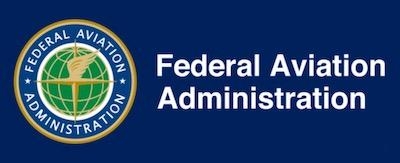Finds Many LOC Accidents Occur In Aircraft Not Approved For Flight Following Maintenance
A LOC (Loss of Control) accident involves an unintended departure of an aircraft from controlled flight. LOC can happen when the aircraft enters a flight regime that is outside its normal flight envelope and quickly develops into a stall or spin. It can introduce an element of surprise for the pilot.

The General Aviation Joint Steering Committee (GAJSC) has identified a number of fatal general aviation accidents caused by flying in an aircraft that is undergoing maintenance and is not approved for return to service. Before you take or fly an aircraft, always check for the signed, “Approval for Return to Service” entry in the aircraft’s logbook.
What is an Approval for Return to Service?
Your aircraft has been under the weather and in the care of an experienced mechanic. When do you know it safe to fly again? This seems like a simple question, but there are some specifics you need to know.
When is your aircraft approved for Return to Service? Is it:
A. When the mechanic gives you a thumbs up?
B. When the mechanic says, “Don’t worry….”
C. When the mechanic calls and leaves a message?
D. When the status board says, “OK to dispatch”?
E. When the aircraft’s log book contains a description of the work performed, the date, and the signature and certificate number of the mechanic?
If you answered anything other than “E”, you are incorrect. Your aircraft is safe to fly only when a licensed mechanic has noted the type of work, the date of work, the aircraft’s total time in service, and has signed the log book with his or her certificate number. The log entry should include a complete description of the service done, and you should see these types of notations for every inspection.
Perform an Advanced Preflight Check
It’s always a good idea to do an advanced preflight on aircraft that has been returned to service. Your preflight should start with the aircraft documentation. Make sure the maintenance work has been documented in the appropriate aircraft log book, and check that the aircraft has been returned to service. Note that if the aircraft was test flown, there may be a discrepancy between the logbook time and what you see on the panel. Take your time looking the aircraft over and pay particular attention to the areas that were worked on, including any disconnections that may have been required to access the parts that were serviced.
It Is Your Responsibility
The bottom line? It “is” the bottom line. As the aircraft owner/operator, it is your responsibility to ensure that maintenance personnel make the appropriate entries in the aircraft logbook.
Proper logbook entries that detail the work completed not only keep you up-to-speed on the condition of your aircraft, but they also serve as an important factor in maintaining the airworthiness and long-term value of your airplane.
As a best practice, always check the logbooks after an aircraft is returned from maintenance. And before you take or fly that aircraft, always look for the signed, “Approval for Return to Service” entry. That way you’ll know for sure that your aircraft is ready to fly.
(Source: FAA)
 NTSB Final Report: Rutan Long-EZ
NTSB Final Report: Rutan Long-EZ ANN FAQ: Turn On Post Notifications
ANN FAQ: Turn On Post Notifications Classic Aero-TV: ICAS Perspectives - Advice for New Air Show Performers
Classic Aero-TV: ICAS Perspectives - Advice for New Air Show Performers ANN's Daily Aero-Linx (06.28.25)
ANN's Daily Aero-Linx (06.28.25) Aero-News: Quote of the Day (06.28.25)
Aero-News: Quote of the Day (06.28.25)



